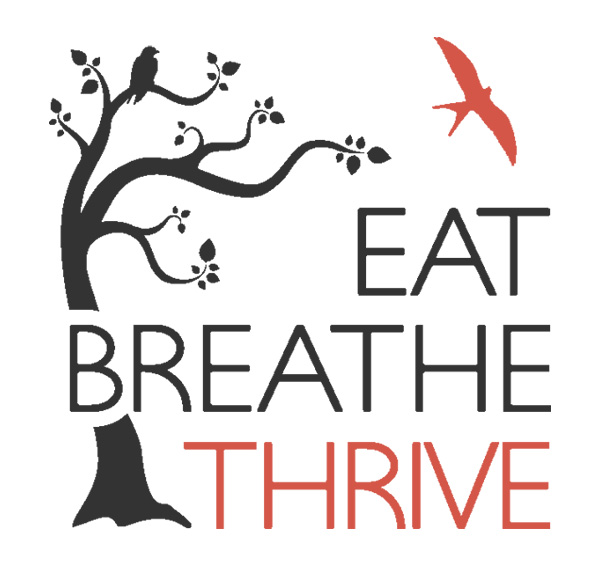Thriving as a Highly Sensitive Person
Earlier this year, I discovered something new about myself in therapy (which I’m always a fan of). I learned that I am what you would call an “HSP,” or, a Highly Sensitive Person. This means that I have a highly sensitive nervous system— a nervous system designed to notice subtleties in the environment— and as a result am more sensitive, empathic, and intuitive than most people. According to Elaine Aron, the psychotherapist and author who pioneered our understanding of high sensitivity, being an HSP is a genetic personality trait (rather than a disorder that can be diagnosed and treated or cured) that affects 20% of the population, regardless of gender or place on the introversion/extroversion scale. HSPs process information differently than most, and we are more easily overwhelmed by intense levels of stimulation.
“High sensitivity is a genetic personality trait that affects 20% of the population.”
Photo credit: Priscilla Du Preez
When I first heard that I am highly sensitive, I was disheartened. Wasn’t being labeled as “sensitive” a bad thing? I was familiar with criticisms like “Stop being so sensitive,” or “You’re too emotional,” or “What are you so afraid of?” In situations with heavy sensory stimulation (such as riding the Indiana Jones ride at Disneyland, watching a TV show with loud music and strobing lights, or smelling really strong scents) I had experienced anxiety or panic attacks. Watching horror movies (which didn’t happen often) made me physically ill. And if a friend of mine (even if they lived clear across the country) told me they weren’t feeling well, suddenly I started experiencing similar symptoms. Not to mention I always seemed to be the only one of my peers who felt such big feelings after experiencing particularly moving movies or music. All of these things told me that being highly sensitive was nothing to celebrate. I just wanted to fit in!
But when I continued to experience anxiety due to intense sensory stimulation, my therapist showed me that stifling my high sensitivity is only doing more harm than good. Any time I felt my body giving me a cue that I was being too overstimulated, I shoved it down. I told myself that I would be seen as weak or a failure if I paused that loud, strobing movie, or put down that triggering book, or left that hot, crowded bar. My therapist assured me that by embracing my sensitivity and listening to the cues my body is giving me, my anxiety will decrease and my quality of life will improve tremendously. When I mentioned that acting on these cues makes me feel like a failure, she asked “Do people who are failures work to decrease their anxiety and take care of themselves?” What do you think my answer was?
While I began experimenting with this idea and listening to my body’s cues, I found Eat Breathe Thrive’s “Yoga for Eating Disorder Recovery” course. I was new to yoga, save for the few classes I’d taken in college, and my facilitator, Hannah, jumped right into how the traditional practice of yoga is helpful for folks with eating disorders. What I quickly realized is that I could also apply these yogic skills to my high sensitivity.
The skill that stood out to me was that of interoception. Interoception is the ability to sense what is happening inside the body at any given time. These are things like breathing rate, heart rate, pain or discomfort, hunger, thirst, etc. Hannah taught me that yoga is less a form of exercise as it is a practice of this inner-awareness and acting on these internal cues in order to give the body what it needs. Which sounded familiar, as this was exactly what my therapist wanted me to start doing in regard to my sensitivity! Soon I was using interoception to respect and protect my body and nervous system. The more I listened to my internal cues and honored them, the less anxious I became.
“When you repurpose the word ‘sensitive’ so that it doesn’t have a negative connotation, you can recognize strengths you didn’t know you had!”
Photo credit: Kelsey Gilchriest
While I’m only at the beginning of my awareness of my high sensitivity, I’m already better at understanding myself and how I interact with the world around me. I’ve been able to repurpose the word “sensitive” so that it doesn’t have a negative connotation, and in doing so I’ve recognized strengths I didn’t know I had (and even transformed what I perceived as weaknesses into strengths!). I am now proud of my strong intuition, my creative and artistic passion, and my ability to connect with others through empathy. I always knew I was different, but I finally see that these differences aren’t a bad thing. I have gifts and abilities that others don’t have, and I’m learning to be grateful for them.
Did this post resonate with you? Do you think you might be an HSP? Check out this Facebook group for Highly Sensitive People, founded by the website “Highly Sensitive Refuge.”
For the HSPs who love Disney, as I do, or if you suspect you may be the parent of a highly sensitive child and want to explain their trait to them with more accessible language, you may be interested in my original post about high sensitivity on my personal blog, where I compare sensitivity to Elsa’s magic from the Frozen movies. You can find that post here.
If you have an eating disorder and are interested in learning more about how yoga and interoceptive skills can help your recovery, I highly encourage you to join the waitlist for Eat Breathe Thrive’s next Yoga for Eating Disorder Recovery course.
JOIN THE CONVERSATION
Are you a Highly Sensitive Person? What gift are you most grateful for as a result of your sensitivity?
Share your answer in the comments below or on social media with the hashtag #EatBreatheThrive.
About The Author

Kelsey Gilchriest is a mental health advocate passionate about breaking down the stigmas that surround mental illness. While in treatment for an eating disorder, her therapist challenged her to use creativity to defy her perfectionism, and her own personal blog was born. The more she wrote and expressed her fears, hopes, and struggles openly and honestly, the more comments and messages she received from readers who saw themselves in her stories. Years later, Kelsey’s blog is still going strong as she continues advocating for those who feel voiceless and dismantling the idea that those with mental health struggles should stay silent.
Kelsey resides in Nashville, Tennessee, and works as a Peer Mentor at Equip. She enjoys yoga and photography in her spare time. Kelsey is thrilled to be writing for Eat Breathe Thrive, and thanks you for reading!



